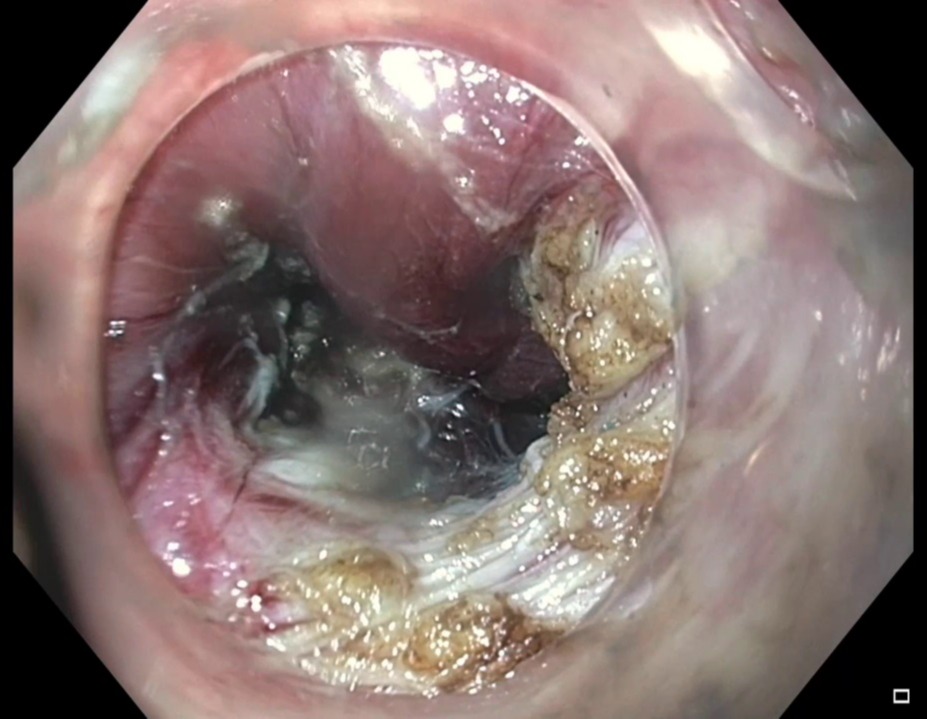Back
Endoscopy Video Forum
Annual Scientific Meeting
Session: Symposium 2C: 10th Annual Endoscopy Video Forum
V6 - Peroral Endoscopic Myotomy in the Presence of Esophageal Varices
Monday, October 24, 2022
5:40 PM – 5:50 PM ET
Location: Richardson Ballroom AB

Hyun Jae Kim, MD
University of British Columbia
Vancouver, BC, Canada
Presenting Author - Endoscopy Video Forum(s)
Hyun Jae Kim, MD, Billy Zhao, BSc, Neal Shahidi, MD, Eric Lam, MD
University of British Columbia, Vancouver, BC, Canada
Introduction: Peroral Endoscopic Myotomy (POEM) is an endoscopic technique used in the treatment of achalasia. This technique involves the creation of a submucosal tunnel in the esophagus to facilitate myotomy of the circular muscular fibers. In patients with cirrhosis, esophageal varices can form within the submucosal space posing major bleeding risk during submucosal tunnel and myotomy. We present a case of a patient with rare co-existence of achalasia with esophageal varices undergoing POEM.
Case Description/Methods: A 58-year-old male with Child-Pugh B7 cirrhosis secondary to non-alcoholic steatohepatitis, history of variceal bleed with grade 1 esophageal varices seen on pre-POEM endoscopy, and portal vein thrombosis on warfarin. He was recently diagnosed with type 2 achalasia with Eckardt score of 6. He was having episodes of aspiration of esophageal contents. He was treated with endoscopic botulinum toxin injection with CRE balloon dilation with only temporary symptom relief. After discussing different therapy modalities with the patient and his hepatology team, decision was made to undergo POEM. The procedure was completed under general anesthesia after holding the patient’s warfarin 5 days pre-operatively. Octreotide 50mcg IV was given just prior to the endoscopy. Luminal assessment confirmed grade 1 esophageal varices with portal hypertensive gastropathy. Mucosal entry was made at 14 cm from gastroesophageal junction (GEJ) with triangular tip knife. Submucosal tunnel was created 2cm past the GEJ. Throughout the procedure varices were noted in the submucosal space and extra care was taken to avoid incision of varices (Fig. 1). Selective myotomy of circular muscle fibers was successfully performed from 8 cm proximal to the GEJ and ending 2 cm distal to the GEJ without significant bleeding. The mucosal entry was closed with clips. The patient tolerated the procedure well. The patient was discharged after monitoring overnight with no complications. At 1-month follow-up, he had Eckardt score of 0 with no delayed complications.
Discussion: POEM is an effective endoscopic technique for management of achalasia. However, intraprocedural risks associated with general anesthesia and bleeding remains a major drawback. In patients with cirrhosis and esophageal varices, it represents an especially challenging therapeutic dilemma. Extra attention should be given during POEM to avoid varices to minimize bleeding risks. This case demonstrates a successful POEM in presence of esophageal varices without complications.

Disclosures:
Hyun Jae Kim, MD, Billy Zhao, BSc, Neal Shahidi, MD, Eric Lam, MD, V6, Peroral Endoscopic Myotomy in the Presence of Esophageal Varices, ACG 2022 Annual Scientific Meeting Abstracts. Charlotte, NC: American College of Gastroenterology.
University of British Columbia, Vancouver, BC, Canada
Introduction: Peroral Endoscopic Myotomy (POEM) is an endoscopic technique used in the treatment of achalasia. This technique involves the creation of a submucosal tunnel in the esophagus to facilitate myotomy of the circular muscular fibers. In patients with cirrhosis, esophageal varices can form within the submucosal space posing major bleeding risk during submucosal tunnel and myotomy. We present a case of a patient with rare co-existence of achalasia with esophageal varices undergoing POEM.
Case Description/Methods: A 58-year-old male with Child-Pugh B7 cirrhosis secondary to non-alcoholic steatohepatitis, history of variceal bleed with grade 1 esophageal varices seen on pre-POEM endoscopy, and portal vein thrombosis on warfarin. He was recently diagnosed with type 2 achalasia with Eckardt score of 6. He was having episodes of aspiration of esophageal contents. He was treated with endoscopic botulinum toxin injection with CRE balloon dilation with only temporary symptom relief. After discussing different therapy modalities with the patient and his hepatology team, decision was made to undergo POEM. The procedure was completed under general anesthesia after holding the patient’s warfarin 5 days pre-operatively. Octreotide 50mcg IV was given just prior to the endoscopy. Luminal assessment confirmed grade 1 esophageal varices with portal hypertensive gastropathy. Mucosal entry was made at 14 cm from gastroesophageal junction (GEJ) with triangular tip knife. Submucosal tunnel was created 2cm past the GEJ. Throughout the procedure varices were noted in the submucosal space and extra care was taken to avoid incision of varices (Fig. 1). Selective myotomy of circular muscle fibers was successfully performed from 8 cm proximal to the GEJ and ending 2 cm distal to the GEJ without significant bleeding. The mucosal entry was closed with clips. The patient tolerated the procedure well. The patient was discharged after monitoring overnight with no complications. At 1-month follow-up, he had Eckardt score of 0 with no delayed complications.
Discussion: POEM is an effective endoscopic technique for management of achalasia. However, intraprocedural risks associated with general anesthesia and bleeding remains a major drawback. In patients with cirrhosis and esophageal varices, it represents an especially challenging therapeutic dilemma. Extra attention should be given during POEM to avoid varices to minimize bleeding risks. This case demonstrates a successful POEM in presence of esophageal varices without complications.

Figure: Grade 1 esophageal varix in submucosal space during myotomy.
Disclosures:
Hyun Jae Kim indicated no relevant financial relationships.
Billy Zhao indicated no relevant financial relationships.
Neal Shahidi indicated no relevant financial relationships.
Eric Lam indicated no relevant financial relationships.
Hyun Jae Kim, MD, Billy Zhao, BSc, Neal Shahidi, MD, Eric Lam, MD, V6, Peroral Endoscopic Myotomy in the Presence of Esophageal Varices, ACG 2022 Annual Scientific Meeting Abstracts. Charlotte, NC: American College of Gastroenterology.

